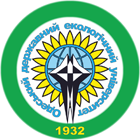Authors: Serga E.N.
Year: 2017
Issue: 21
Pages: 39-48
Abstract
The article analyzes the improved multifactor non-linear regression model with feedbacks and overdetermined expressions for coefficients of system of equations. It studies probable situations occurring when sampling of influencing factors takes place after selection process is complete. It also shows change of type of generating functions and expressions for determining the elements of matrixes and vectors of free terms required in order to get coefficients of feedbacks. The presented system of equations of non-linear regression model takes into account the influence of feedbacks between responses as independent term of equations. General significance of influencing factors and their powers is defined using Fisher’s test.
To determine connection between zones of intensive interaction of hydrometeorological characteristics of the North Atlantic and uniform regions of Eastern Europe the model was tested as a simulation one. To reveal zones of active interaction between the atmosphere and the ocean in the North Atlantic region and to determine the regions causing a significant impact on formation of peculiarities of climatic regimes in the regions of response, methods of cluster and component analysis were applied to influencing factors serving as characteristics of heat and moisture exchange in the near-surface layer and also characteristics of heat, moisture content and circulation properties of air at the 850 hPa and 700 hPa levels before including the latter in the model.
Main components of interactions of hydrometeorological characteristics were included into initial sets of samples of the model’s influencing factors and responses. Significant multiple correlation coefficients which characterize the degree of adequacy of the model prove the possibility of its practical use when solving similar problems.
Tags: coefficients of equations; feedbacks; influencing factors; multifactor regression model; polynomial approximant; аппроксимирующие полиномы; аппроксимирующие полиномы; влияющие факторы; влияющие факторы; коэффициенты уравнений; коэффициенты уравнений; многофакторная регрессионная модель; многофакторная регрессионная модель; обратные связи; обратные связи
Bibliography
- Randall D. A., Wood R. A., Bony S., Colman R., Fichefet T., Fyfe J., Kattsov V., Pitman A., Shukla J., Srinivasan J., Stouffer R.J., Sumi A., Taylor K. Climate models and their evaluation. In: Climate Change 2007: The physical science basis. Contribution of Working Group I to the Fourth As-sessment Report of the Intergovernmental Panel on Climate Change. Cambridge University Press, Cambridge, United Kingdom and New York, NY, USA, 2007. (Eds: Solomon S., Qin D., Manning M. et al.)
- Dymnikov V. P., Lykosov V. N., Volodin E. M. Simulation of climate and climate change: Modern problems. Vestnik Rossiyskoy akademii nauk – Bulletin of the Russian Academy of Sciences, 2012, vol. 82. pp. 227–236. (In Rus-sian)
- Zhulikov S. E. Mathematical modeling of short-term weather forecast. Vestnik Tambovskogo universiteta – Bulletin of Tambov University, 2009, vol. 14, issue. 5, pp. 1021–1026. (In Russian)
- Zaripov R. B. A review of modern methods for increasing detailing of meteorological fields. Dinamika okruzhayu-shchey sredy i globalnyye izmeneniya klimata – The dynamics of the environment and global climate change, 2010, no 1. pp. 1–11. (In Russian).
- Katsov V. M., Meleshko V. P. Current priorities of the fundamental climate research. Trudy GGO – Proceedings of the Main Geophysical Observatory, 2008, vol. 557, pp. 3–19. (In Russian)
- Ayvazyan S. A., Enyukov I. S., Meshalkin L. D. Priklad-naya statistika. Osnovy modelirovaniya i pervichnaya obrabotka dannykh [Applied statistics. Bases of modelling and initial data processing.]. Moscow: Finansy i statistika, 1983. 471 p.
- Meleshko V. P., Gavrilina V. M., Mirvis V. M., Matyugin V. A., Pichugin Yu. A., Vavulin S. V. Statistical hydrodynamic long-range forecast of meteorological fields with the MGO model. 2. Operational test results and pros-pects of improving the prognostic scheme. Meteorologiya i gidrologiya – Meteorology and hydrology, 2002, no. 10, pp. 5–17. (In Russian)
- Maqsood I., Khan M. R., Abraham A. An ensemble of neu-ral networks for weather forecasting . Neural Computing & Applications, 2004, vol.13, no 2, pp. 112–122.
- Taylor, J. W., Buizza R. Neural Network Load Forecasting with Weather Ensemble Predictions. IEEE Trans. on Power Systems, 2002, vol. 17 (3). pp. 626-632.
- Shkol’nyy E. P. Multi-factor regression model of physical and statistical method of weather forecasting. Trudy Ukrainskogo nauchno-issledovatelskogo gidrometeo-rologicheskogo institute – Proc. of the Ukrainian Scientific Research Hydrometeorological Institute, 1976, no. 134, pp. 3–24. (In Russian).
- Mayboroda L. A., Shkol’nyy E. P. Atmosfera i upravlenie dvizheniem letatel’nykh apparatov [Atmosphere and traffic control of flying machines]. Sankt-Petersburg: VITI, 2010. 572 p.
- Domrachyov A. E. Meteorological conditions of formation of microstructure of warm fogs in Odessa: Diss…Cand. Geogr. Sci.: 11.00.09. Odessa, 1989. 177 p. (In Russian)
- Sluzhba dannykh ЕСMWF ERA-40 [Data Service ESMWF ERA-40]. http://www.ecmwf.int/products/data.
- Serga E. N. The universal iterative method of clusterization of data. Ukraїns’kij gіdrometeorologіchnij zhurnal – Ukr.hydrometeor.j. 2013, no 12. http://uhmj.odeku.edu.ua/ uk/category/2013-uk/12-uk/ (In Russian).
- Shkol’nyi E. P., Serga E. N. Influence of processes in the ocean-atmosphere system in North Atlantic on the intraan-nual variation on climatic characteristics on the territory of Ukraine . Physical Oceanography, 2009, vol. 19, no. 4, pp.240–253.
- Serga E. M. The results of numerical experiments on a sta-tistical model of the dynamics of climate in Ukraine. Mіzhvіdomchiy naukovyy zb. Ukrayiny: Мeteorolohia, klimatolohia ta hidrolohiya – Interdepartmental Scientific Collection of Articles of Ukraine: Meteorology, Climatol-ogy and Hydrology, 2004, no. 48. pp. 23-32. (In Ukraine)



